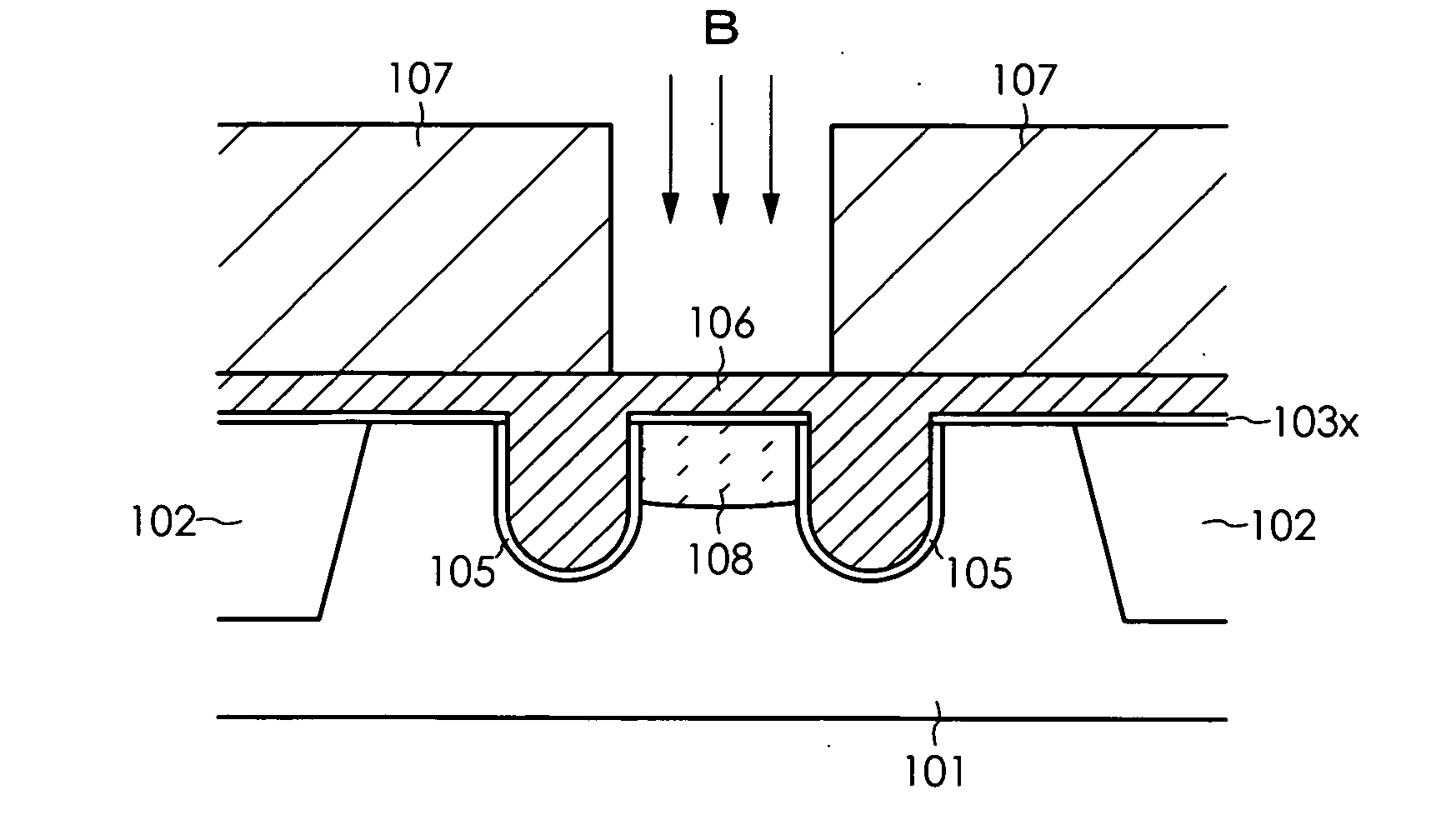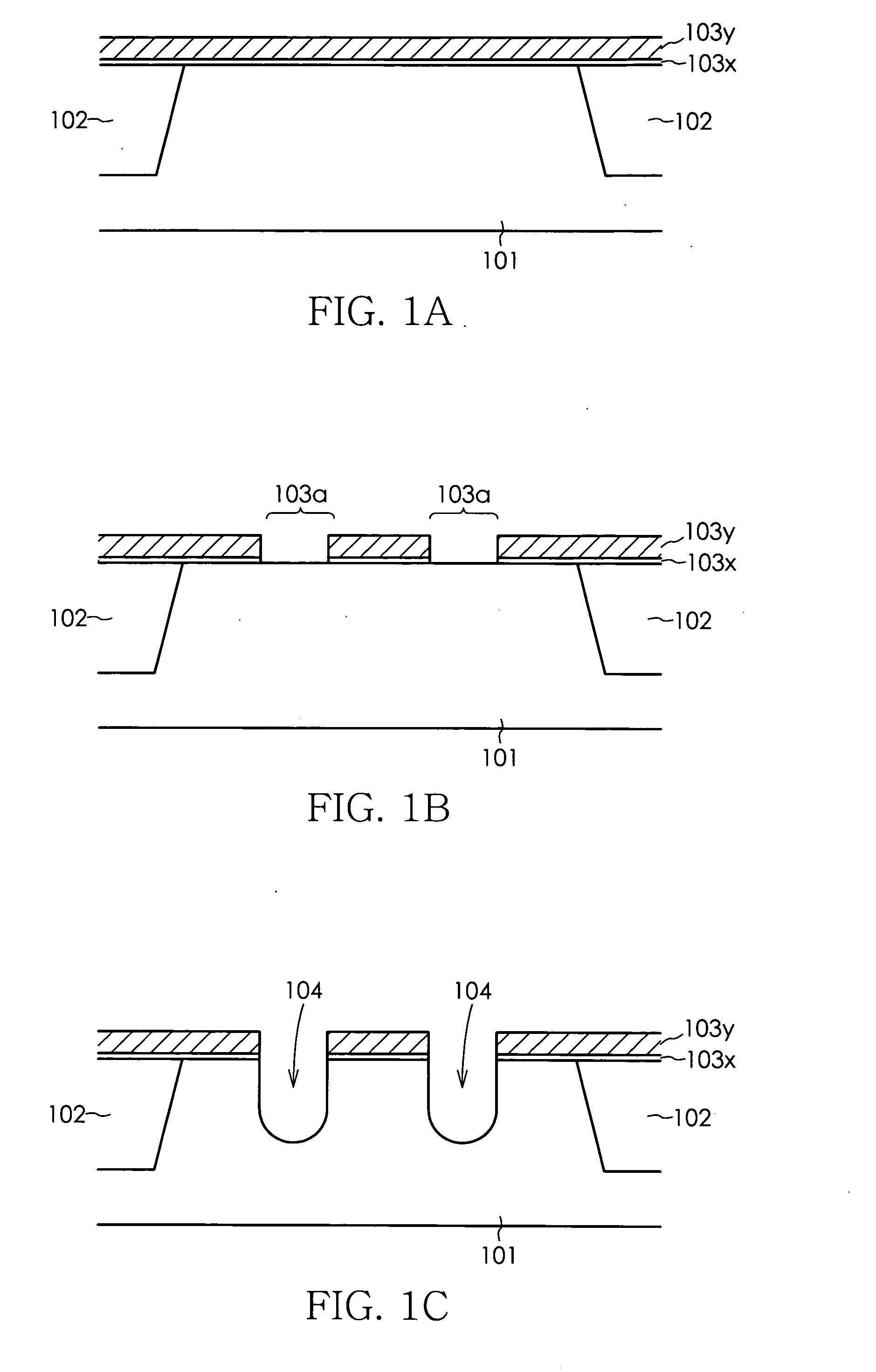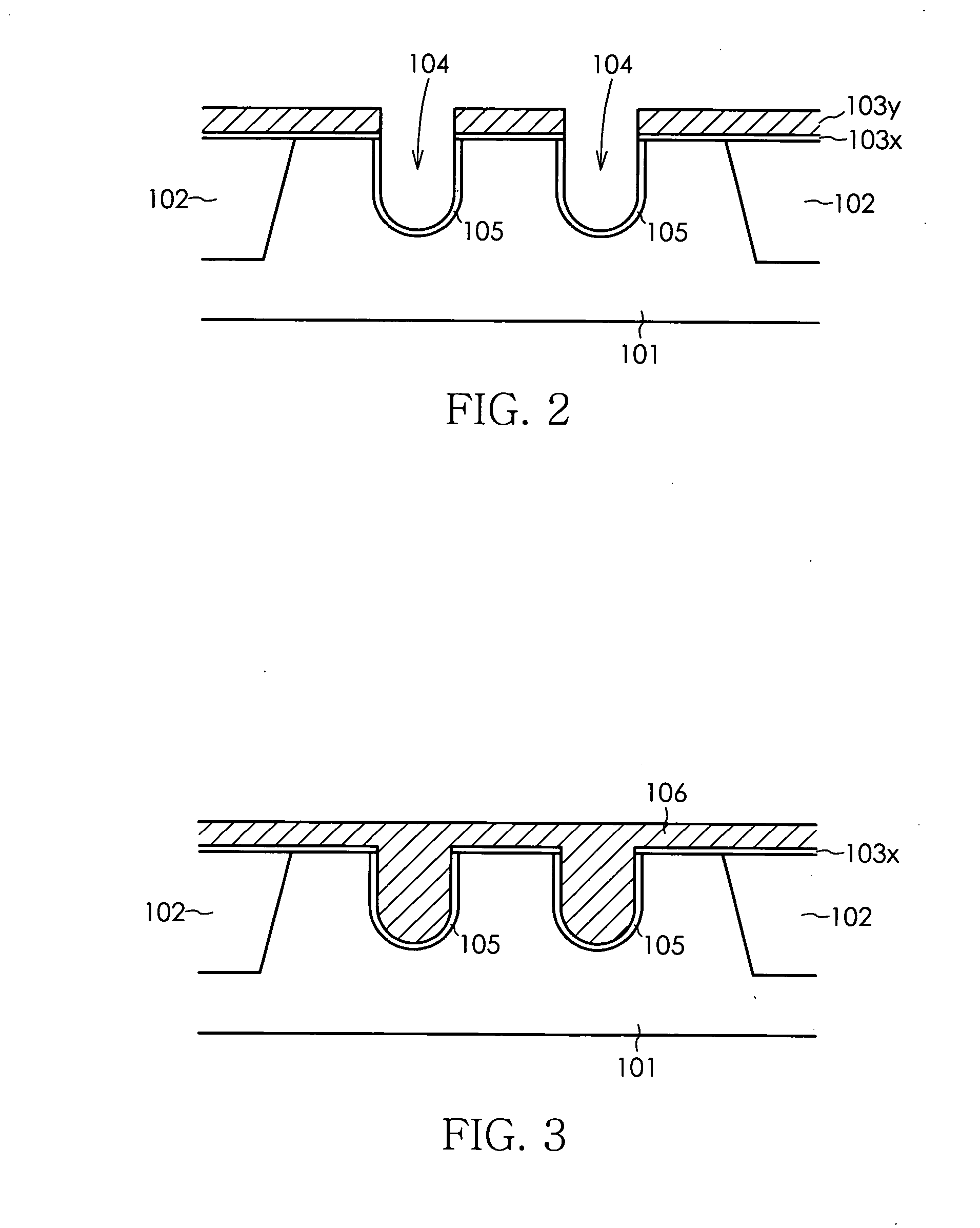Method for manufacturing semiconductor device
- Summary
- Abstract
- Description
- Claims
- Application Information
AI Technical Summary
Benefits of technology
Problems solved by technology
Method used
Image
Examples
first embodiment
[0033]FIGS. 1 through 8 are schematic cross sectional views or plan views showing the process for manufacturing DRAM according to the present invention.
[0034] In the DRAM manufacturing process according to the present embodiment, an element separation region 102 having a depth of about 250 to 350 nm is first formed by an STI (Shallow Trench Isolation) method on a P-type silicon substrate 101, after which a silicon oxide film 103x having a thickness of about 10 to 20 nm and a silicon nitride film 103y having a thickness of about 100 to 200 nm as protective insulating films are sequentially deposited by a CVD method on the surface of the silicon substrate 101 as shown in FIG. 1A. An opening 103a is then formed by using a photolithography to selectively remove the silicon nitride film 103y and silicon oxide film 103x in the prescribed region in which the gate electrode is to be formed, as shown in FIG. 1B, and a mask pattern is formed for use in forming a gate trench. Two grooves (gate...
second embodiment
[0044]FIGS. 9 through 11 are schematic cross sectional views and schematic plan views showing part of the process for manufacturing DRAM according to the present invention.
[0045] A feature of the present embodiment is that ion implantation for forming the bit-line-side source / drain region is first performed on a P-type silicon substrate 101 in which an element separation region 102 is formed, and then a sequence of steps is performed that includes gate electrode formation and other processes.
[0046] The step for forming a source / drain region on the bit line side is substantially the same as in the first embodiment. After a photo-resist 107 is first formed on the entire surface of a P-type silicon substrate 101, the photo-resist in the region in which the bit-line-side source / drain region is to be formed is selectively removed to form an opening 107a, and a mask pattern for ion implantation is formed, as shown in FIGS. 9A and 9B. FIG. 9A is a schematic plan view showing the process f...
PUM
 Login to View More
Login to View More Abstract
Description
Claims
Application Information
 Login to View More
Login to View More - R&D
- Intellectual Property
- Life Sciences
- Materials
- Tech Scout
- Unparalleled Data Quality
- Higher Quality Content
- 60% Fewer Hallucinations
Browse by: Latest US Patents, China's latest patents, Technical Efficacy Thesaurus, Application Domain, Technology Topic, Popular Technical Reports.
© 2025 PatSnap. All rights reserved.Legal|Privacy policy|Modern Slavery Act Transparency Statement|Sitemap|About US| Contact US: help@patsnap.com



